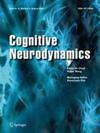四元数值记忆神经网络在时间尺度上的被动和耗散模糊控制。
IF 3.9
3区 工程技术
Q2 NEUROSCIENCES
引用次数: 0
摘要
研究了一类分数阶四元数模糊记忆神经网络的无源性和耗散性分析问题。通过构造适当的Lyapunov泛函,利用不等式技术,建立了几种改进的无源性判据和耗散性结论,这些结论可以通过一些标准的数学计算进行有效的检验。与以往的结果不同,我们的推导涉及到四元数的连接,避免了考虑四元数的“大小”。最后,给出了基于模糊模型的两个仿真实例,验证了所提方法的有效性。本文章由计算机程序翻译,如有差异,请以英文原文为准。
Passivity and dissipativity-based fuzzy control of quaternion-valued memristive neural networks on time scales.
In this paper, the problem of passivity and dissipativity analysis are investigated for a class of fractional-order quaternion-valued fuzzy memristive neural networks. By constructing proper Lyapunov functional and employing inequality technique, several improved passivity criteria and dissipativity conclusions are established, which can be checked efficiently by use of some standard mathematical calculations. Different from previous results, involving the quaternions connections, our derivation avoid considering the "magnitude" of quaternion. Finally, two simulation examples based on the fuzzy model are given to demonstrate the effectiveness of the proposed techniques.
求助全文
通过发布文献求助,成功后即可免费获取论文全文。
去求助
来源期刊

Cognitive Neurodynamics
医学-神经科学
CiteScore
6.90
自引率
18.90%
发文量
140
审稿时长
12 months
期刊介绍:
Cognitive Neurodynamics provides a unique forum of communication and cooperation for scientists and engineers working in the field of cognitive neurodynamics, intelligent science and applications, bridging the gap between theory and application, without any preference for pure theoretical, experimental or computational models.
The emphasis is to publish original models of cognitive neurodynamics, novel computational theories and experimental results. In particular, intelligent science inspired by cognitive neuroscience and neurodynamics is also very welcome.
The scope of Cognitive Neurodynamics covers cognitive neuroscience, neural computation based on dynamics, computer science, intelligent science as well as their interdisciplinary applications in the natural and engineering sciences. Papers that are appropriate for non-specialist readers are encouraged.
1. There is no page limit for manuscripts submitted to Cognitive Neurodynamics. Research papers should clearly represent an important advance of especially broad interest to researchers and technologists in neuroscience, biophysics, BCI, neural computer and intelligent robotics.
2. Cognitive Neurodynamics also welcomes brief communications: short papers reporting results that are of genuinely broad interest but that for one reason and another do not make a sufficiently complete story to justify a full article publication. Brief Communications should consist of approximately four manuscript pages.
3. Cognitive Neurodynamics publishes review articles in which a specific field is reviewed through an exhaustive literature survey. There are no restrictions on the number of pages. Review articles are usually invited, but submitted reviews will also be considered.
 求助内容:
求助内容: 应助结果提醒方式:
应助结果提醒方式:


